How to Cook Perfect Bulgur Wheat on the Stove
on Apr 24, 2020, Updated Dec 22, 2024
This post may contain affiliate links. Please read our disclosure policy.
Everything you need to know about how to cook bulgur wheat, and how to use it!
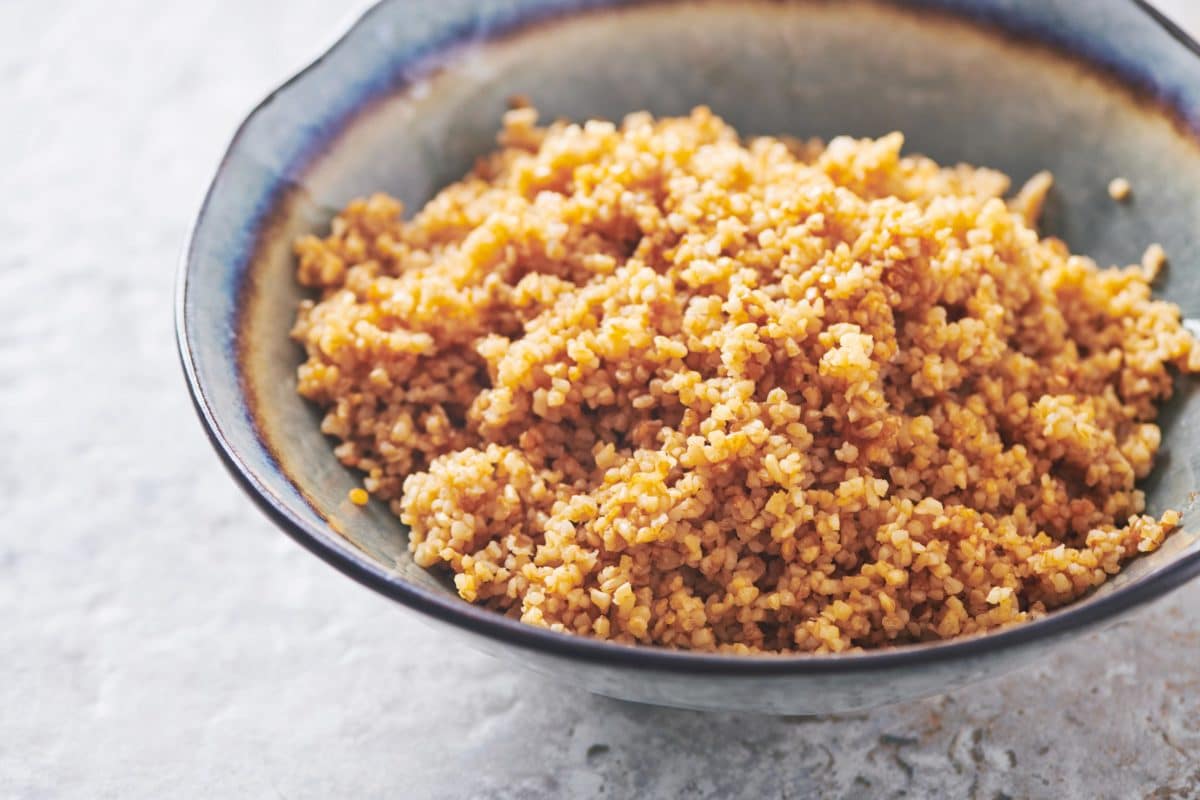
A staple in Middle Eastern and Mediterranean regions, bulgur wheat is a healthy whole grain we should all get to know better. It is a cracked wheat that has been parboiled, which means it retains much of its whole grain nutritional benefits while cooking quickly.
Bulgur wheat is great on its own as a side dish or a base for saucy main courses. It is so easy to cook — in fact, it’s often not actually cooked but soaked in liquid until it becomes tender. In this bulgur wheat recipe I use a combo of a quick simmer and a soak for the fastest way to cook bulgur wheat.
By signing up, you agree to our Privacy Policy.
Bulgur can be added to meat dishes like kibbeh and meatloaf to boost nutrition and bulk them up. Many people have encountered this grain for the first time as a core ingredient in the famous Middle Eastern grain salad, Tabbouleh.
What's In This Post?
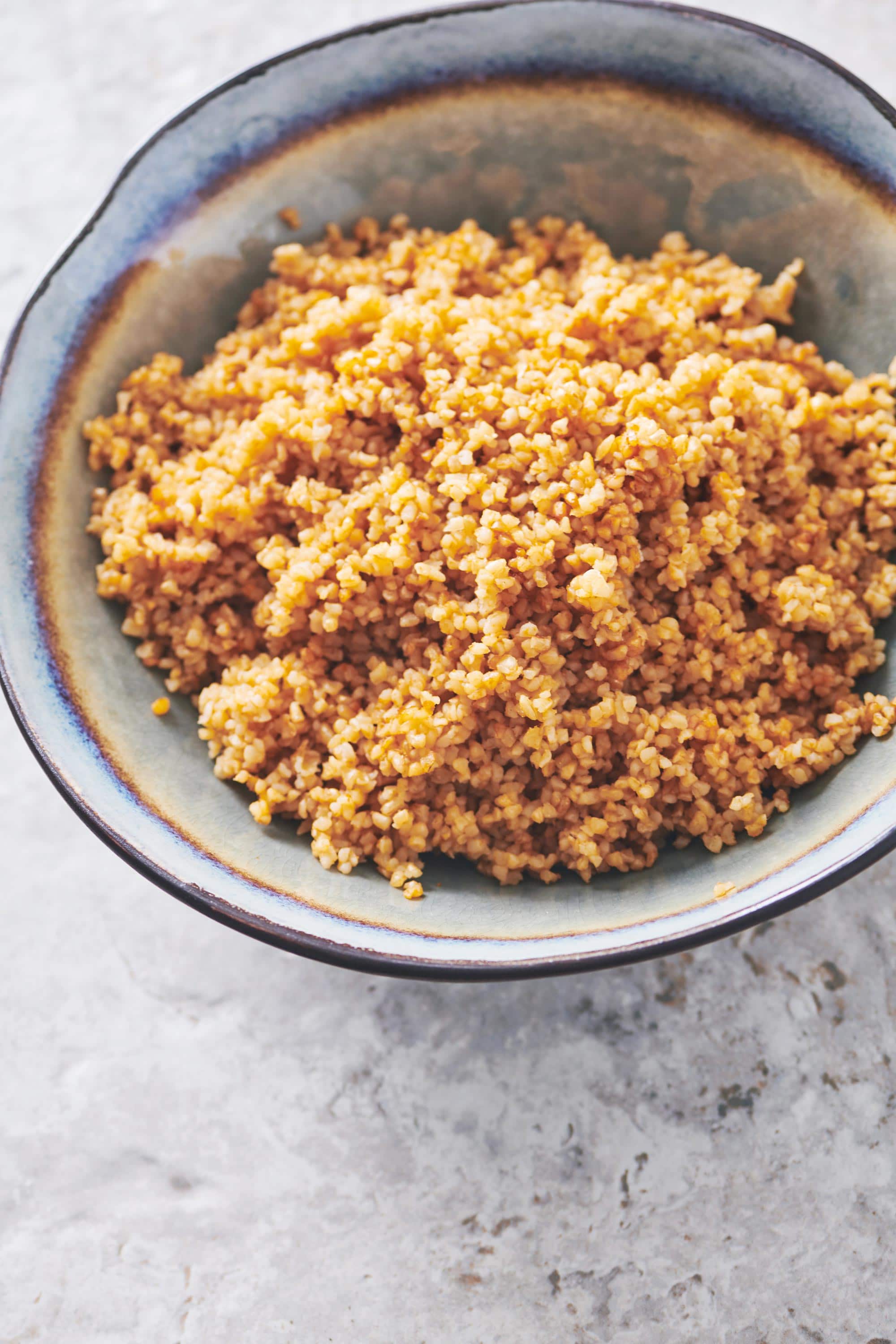
I like to use bulgur wheat as the base of all kinds of satisfying salads, like my simple Bulgur Wheat Salad, or add a couple more ingredients for a Tomato, Zucchini, and Bulgur Salad. Try it in Bulgur Wheat with Caramelized Onions and Parsley, a perfect filling side that goes with almost anything. It can also be added to soups and stews and makes a great substitute for quinoa.
Bulgur wheat can also become a main dish, especially when combined with vegetables. Try this Bulgur Wheat, Sweet Potato, and Black Bean Gratin. And it’s convenient: bulgur can be made at the beginning of the week, and you can keep it in the fridge to eat and repurpose all week long!
How to Cook Bulgur Wheat: A simple 20 minute recipe for how to cook perfect bulgur wheat on the stove — nutritious, delicious, and versatile.
What Is Bulgur Wheat?
Bulgur wheat is a whole wheat grain that has been cracked and partially pre-cooked. It has a lovely, nutty flavor. Bulgur is terrific in all sorts of side dishes, soups, pilafs, casseroles, and salads. You can use it as the base of grain salads and also add it to green salads for some textural interest and added nutrition.
Bulgur is high in fiber and low in fat and also has a nice amount of protein, according to the USDA. However, because it is wheat, it is not gluten-free.
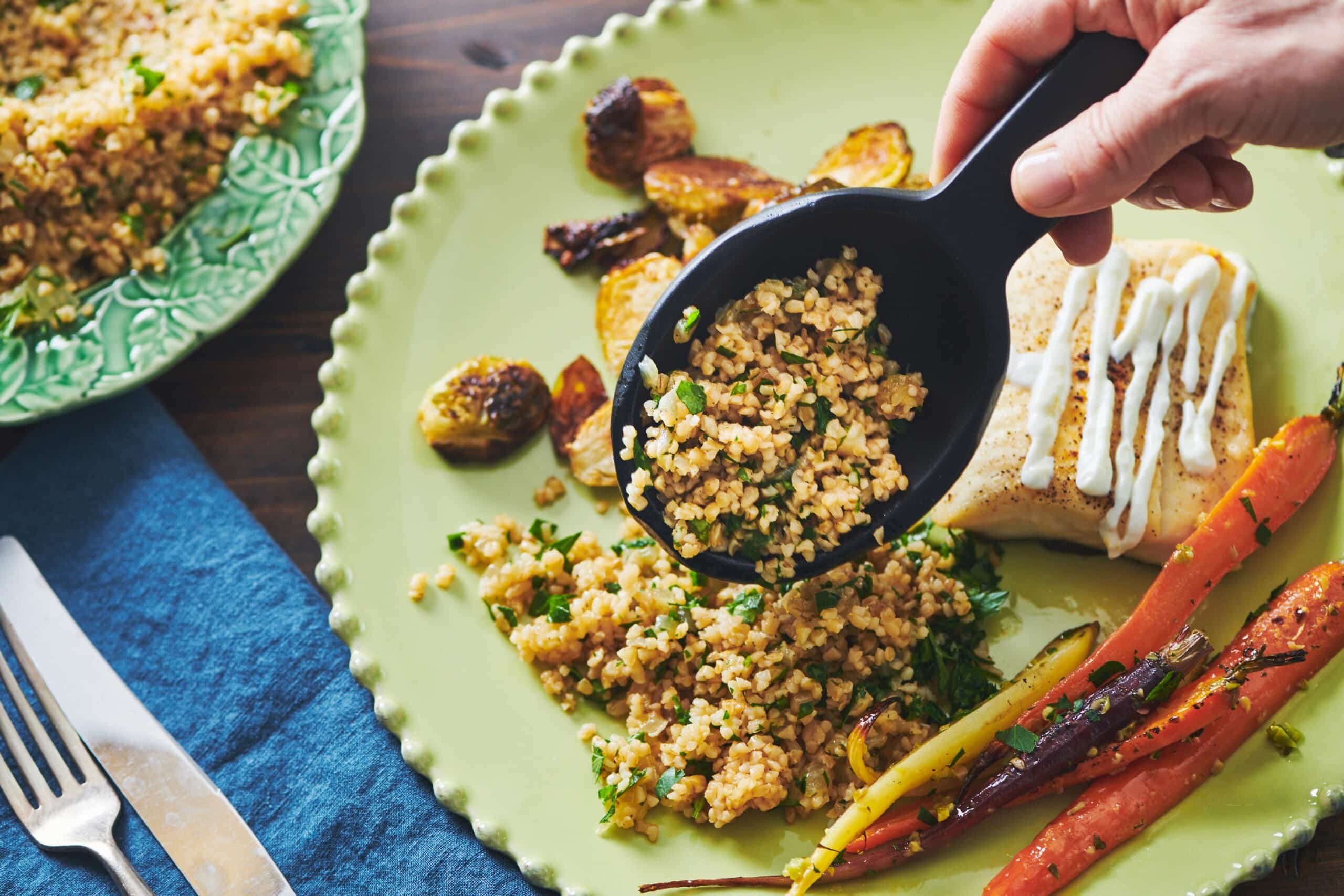
Types of Bulgur Wheat
Bulgur comes in fine, medium, and coarse grind versions. If your package does have specific directions, you should follow them.
Different types of bulgur wheat require different cooking methods. Just soaking works very well for fine-grind bulgur. But for medium or coarse grinds, the soaking method takes a while, so giving it a simmer and then a soak speeds things along.
FAQs
Bulgur takes about 20 minutes total to “cook,” though half of that time is resting time off the heat, where the grains continue to absorb the cooking liquid.
Technically, bulgur doesn’t have to be cooked per se but rather soaked because the grains are already parboiled. Just soaking works very well for fine-grind bulgur. For medium or coarse bulgur, the soaking method will take at least a few hours. I like to bring the bulgur in the liquid to a quick simmer and then let it soak. This takes less time than just soaking alone.
On the whole, the answer is yes, though there are different types of rice with varying degrees of nutrients in them. Bulgur is less processed than white rice, which means more of the nutrients remain in the grain. Bulgur wheat provides a lot of fiber, vitamins, minerals (like magnesium), and also protein, so it’s a great high-powered carb to include in your meals. Whole grains, in general, are understood to lower blood pressure and aid in digestive health, according to the American Heart Association. All in all, adding them to your diet is super smart.
Bulgur and other whole grains have been shown to be effective in losing weight, as fiber and protein help you feel fuller longer. But bulgur is so delicious and texturally satisfying that you’ll find yourself cooking and eating it for pleasure rather than as an obligation!
This depends on the type of bulgur wheat you have and on how much time you have. For finely ground bulgur, just soak it, and it will be ready quickly. For coarse bulgur, choose between soaking for several hours or simmering before soaking to speed up the process, which is what I recommend.
Bulgur Wheat to Water Ratio
I use 1 ¾ cups water to 1 cup dried bulgur. Too much water means the grains can become soggy, too little water and the grains will und up crunchy, dry, and not cooked through.
Instead of water, consider cooking the grains in diluted broth. This gives the grains a bit of additional flavor without overpowering the nutty taste of the grains. I usually use a diluted vegetable broth. This way, I can use the grains in any recipe or dish without worrying about it.
You can use half canned or boxed broth and half water to get a more delicately flavored broth. Or, just use a smaller amount of a stock concentrate like Better Than Bouillon in water. I usually use about half the amount of the paste that the packaging suggests. So, for 1 3/4 cups of water, I would use 1 teaspoon of boullion paste instead of 2 teaspoons.
How to Cook Bulgur Wheat
- Combine bulgur with liquid: In a saucepan, stir together 1 cup of bulgur and 1 3/4 cups water or broth in a saucepan.
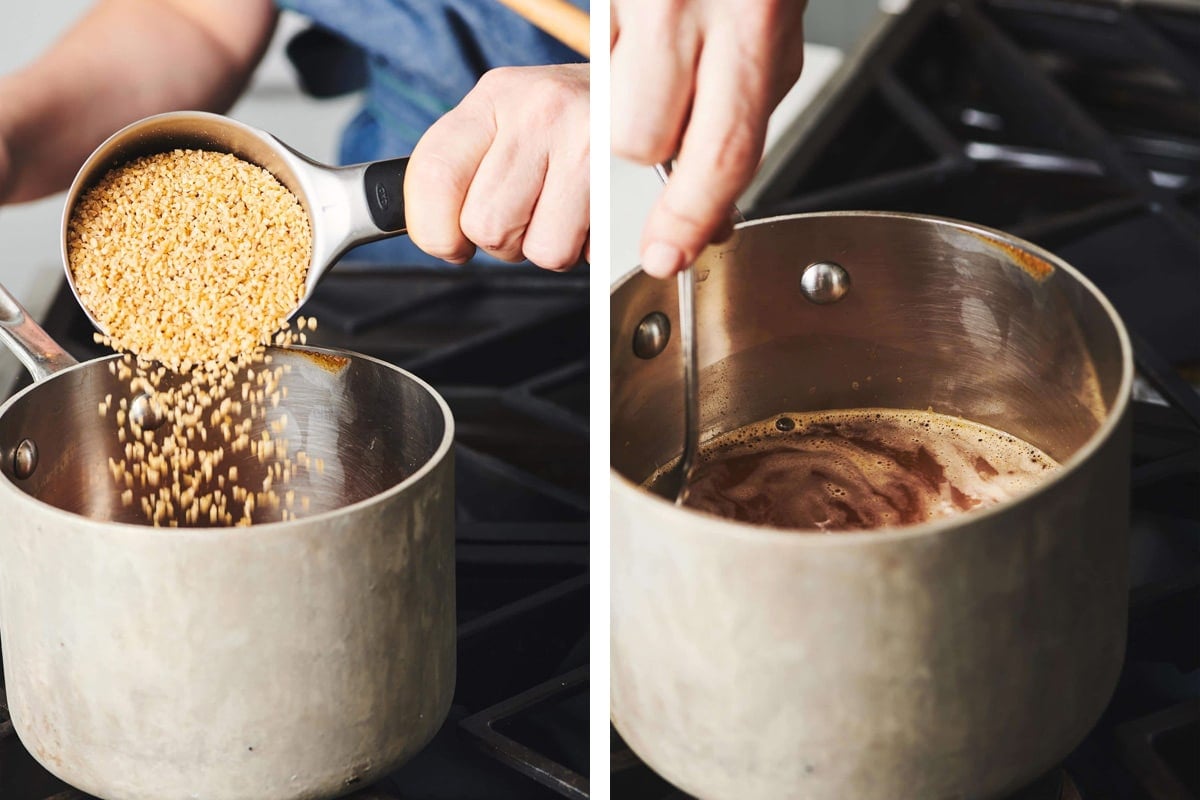
- Simmer: Bring to a simmer and then cover; lower the heat and continue to simmer gently for about 10 minutes.
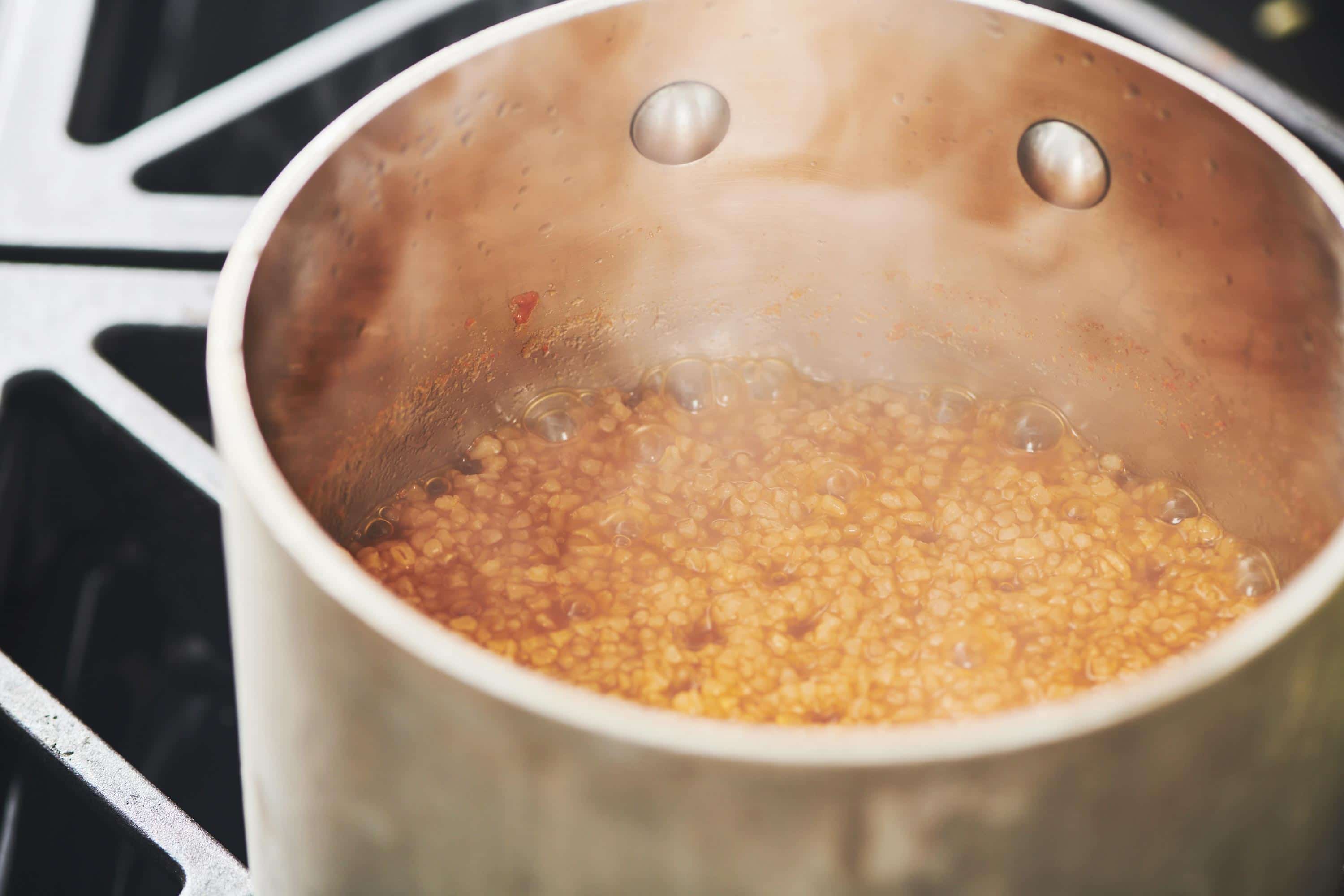
- Let rest: Turn off the heat and let it sit, covered, for another 10 minutes. All of the liquid should be absorbed, and the grains should be tender.
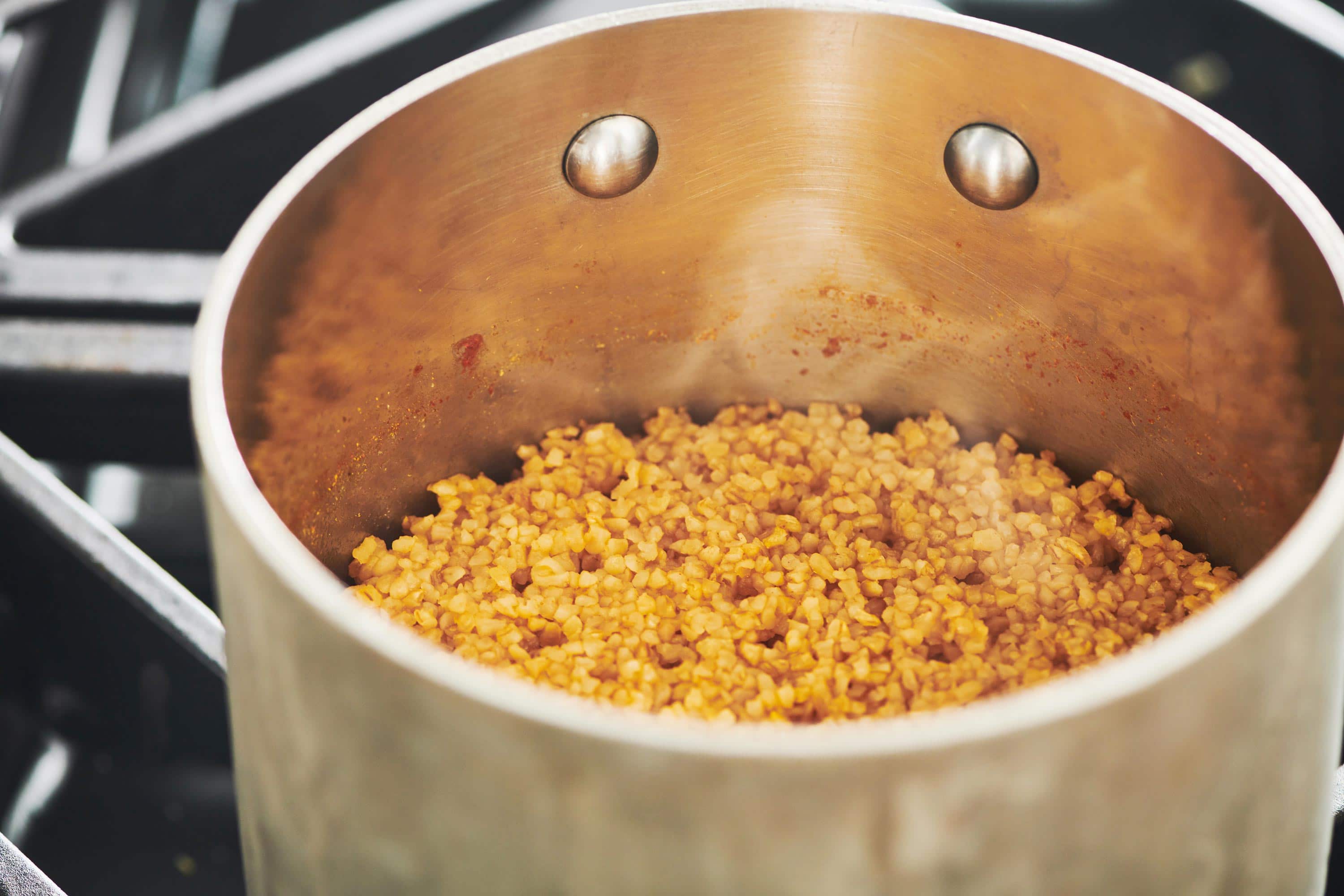
- Finish: If you are using it in a warm preparation, fluff it with a fork and continue with the recipe. Or, to cool it for salads, spread it out on a rimmed baking sheet until it gets to room temperature.
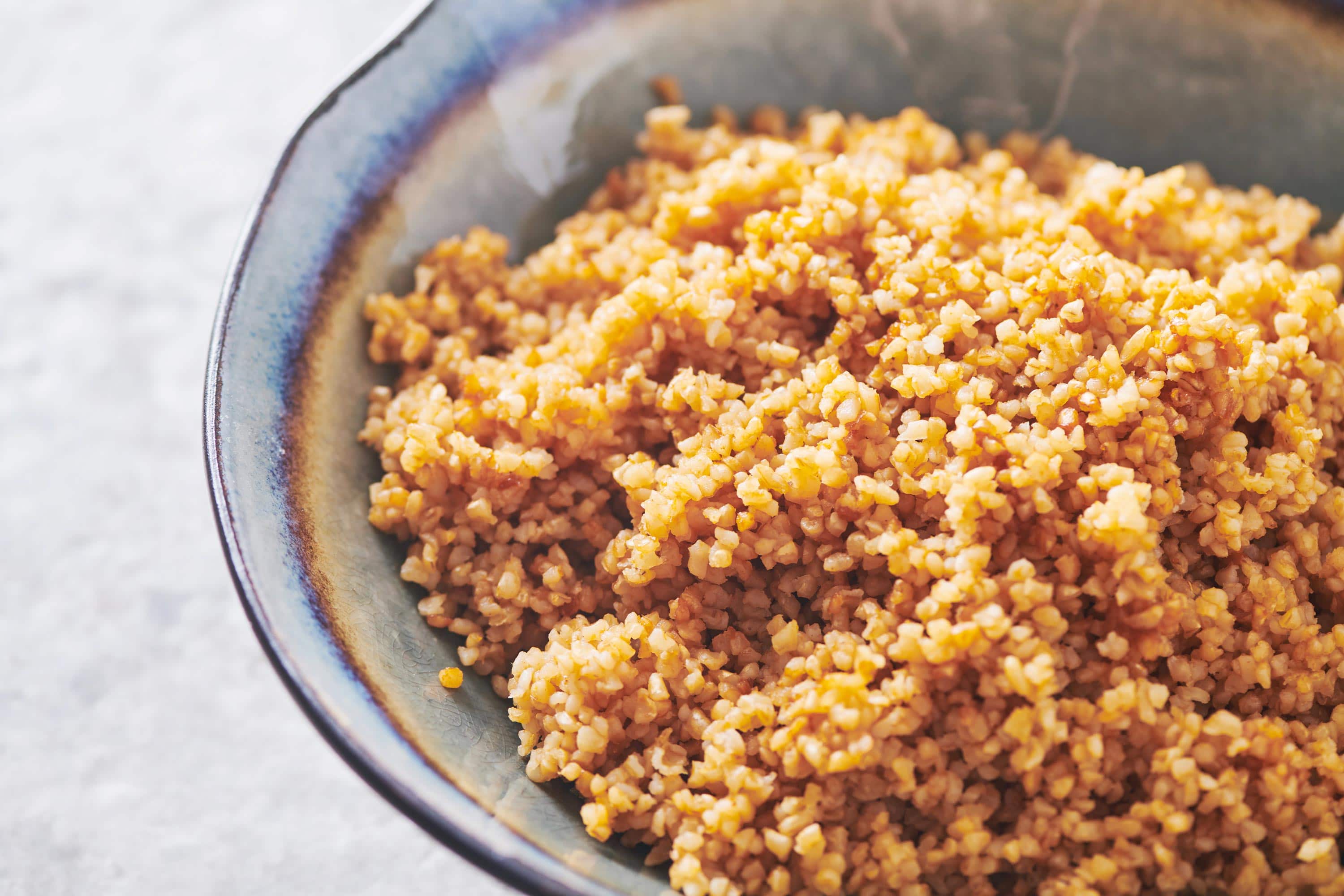
Tips
- If the grains need a few more minutes of cooking time, just replace the lid and let it sit a bit longer. Conversely, if the grains are as tender as you want them and there is still liquid left in the pot, drain the grains in a colander.
- How tender or chewy-firm you like your bulgur is up to you.
- Cooled bulgur can be stored in a covered container in the fridge for up to 5 days.
What to Serve With Bulgur Wheat
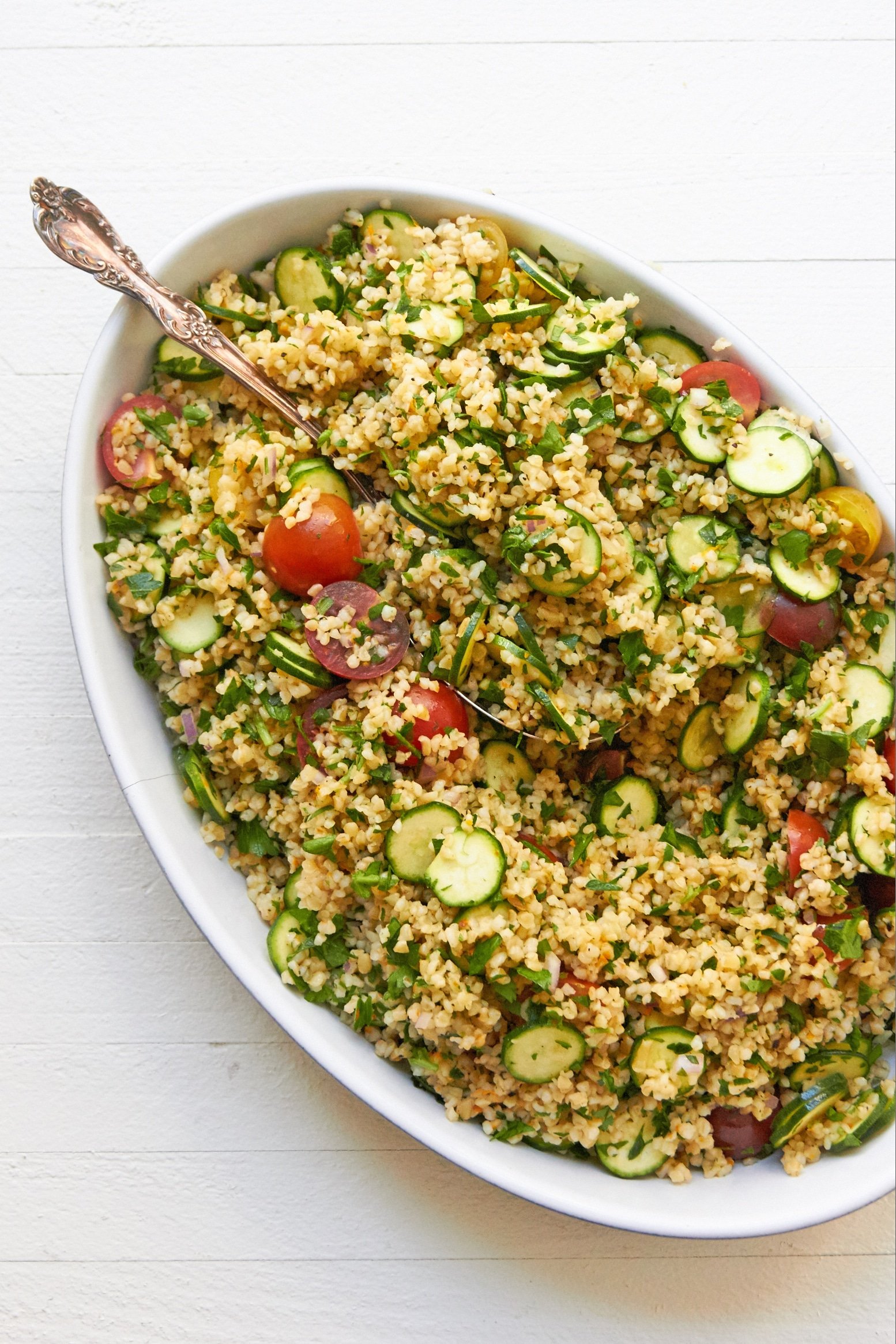
More Basic Grain Recipes
Pin this now to find it later
Pin It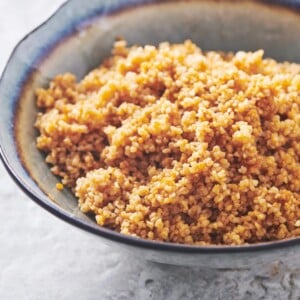
How to Cook Perfect Bulgur Wheat on the Stove
Ingredients
- 1 cup medium-grain bulgur
- 1¾ cups water or diluted broth (see Note)
- Pinch of salt
Instructions
- Combine 1 cup of medium-grain bulgur and 1 3/4 cups of diluted broth in a saucepan with a generous pinch of salt.
- Bring to a simmer and then cover, lower the heat, and continue to simmer gently for about 10 minutes.
- Turn off the heat and let it sit for another 10 minutes. All of the liquid should be absorbed, and the grains should be tender. If the grains need a few more minutes of cooking time, replace the lid and let it sit a bit longer. Conversely, if the grains are as tender as you want them — this is a matter of personal preference — and there is still liquid left in the pot, drain the grains in a colander.
- If you are using it in a warm preparation, fluff it with a fork and continue with the recipe, or to cool it, spread it out on a rimmed baking sheet until it gets to room temperature. If you are using it at another time, you can then transfer the cooled grains to a container and store it in the fridge for up to 5 days.
Notes
- If the grains need a few more minutes of cooking time, just replace the lid and let it sit a bit longer. Conversely, if the grains are as tender as you want them and there is still liquid left in the pot, drain the grains in a colander.
- How tender or chewy-firm you like your bulgur is up to you.
- Cooled bulgur can be stored in a covered container in the fridge for up to 5 days.
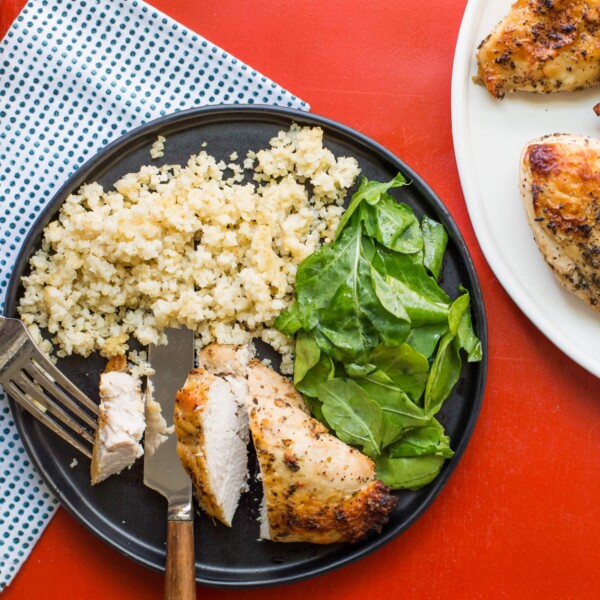
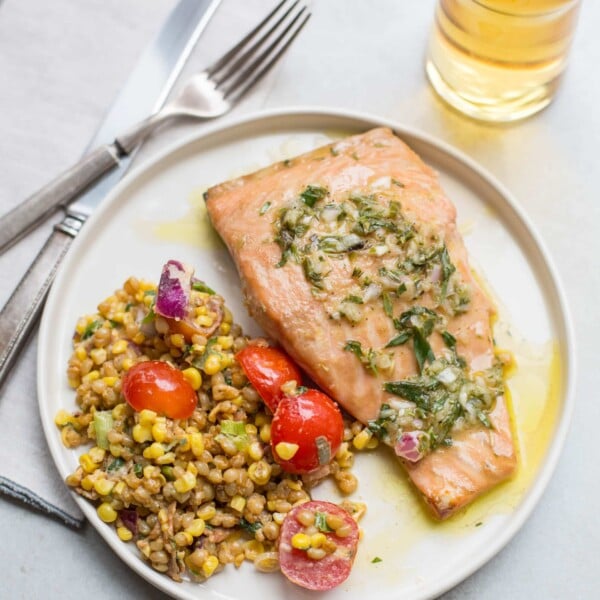
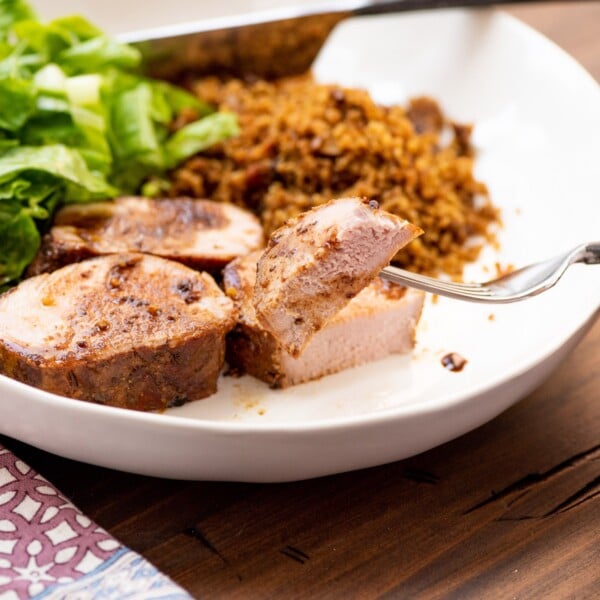
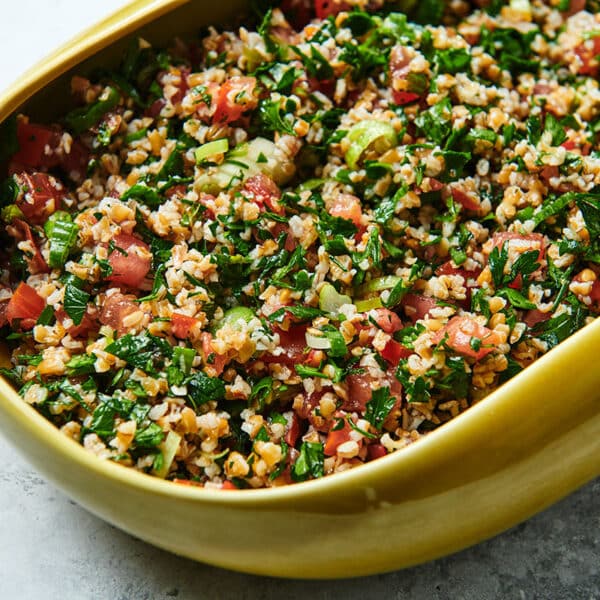
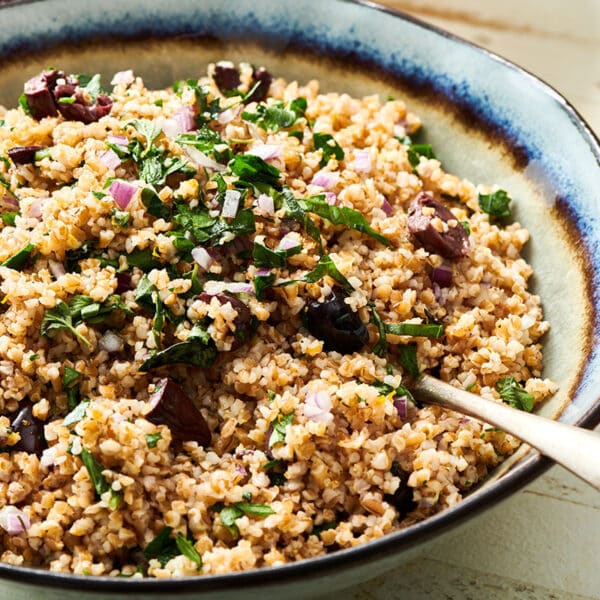









Thanks. The recipe was easy and straightforward to follow. I was just cooking it to freeze for later. Loved the stock tip, so not too much seasoning when I dress the bulgar wheat up later.
Great recipe
Hello.This post was extremely interesting, especially since I was investigating for thoughts on this topic last Monday.
It’s a good meal and I enjoy it could have it every day.so so good.
Hopefully someone can help. I cooked burglar and finish the recipe like it had sad but it has a thick sort of film on it. should I have rinsed it. it was like overcooked spaghetti. Thanks for any help you can give
My family is from Turkey so we use bulgur often. We buy it loose (by the pound), so no nutritional
information is available. You offer that information, but not the quantity. Please state.
I used to buy bulgar wheat in a box called Kashi in St. Louis in the 1960s. The recipe on it involved mushrooms. Do you know a recipe for bulgar wheat with mushrooms? The bulgar wheat I have from nuts.com says to use 1 cup bw in 3 cups boiling water.
I seem to remember using mushroom soup in the recipe. I also have some fresh mushrooms to use with it.
I don’t but that sounds pretty delicious!
I think you were using kasha which is buckwheat. It is a russian food and made by european jewish cooks.
You can find it in the jewish section of some grocery stores
I had a similar recipe. It called for sautéing the mushrooms and bulgar in oil and then adding the water or broth. Simple. I may have added minced onion also.
After cooking the bulgar wheat and cooling it.
Can’t be blended into a finer mash and used in making a baked meat or mixed nut pie?
Absolutely, that sounds right! It would become a binder.